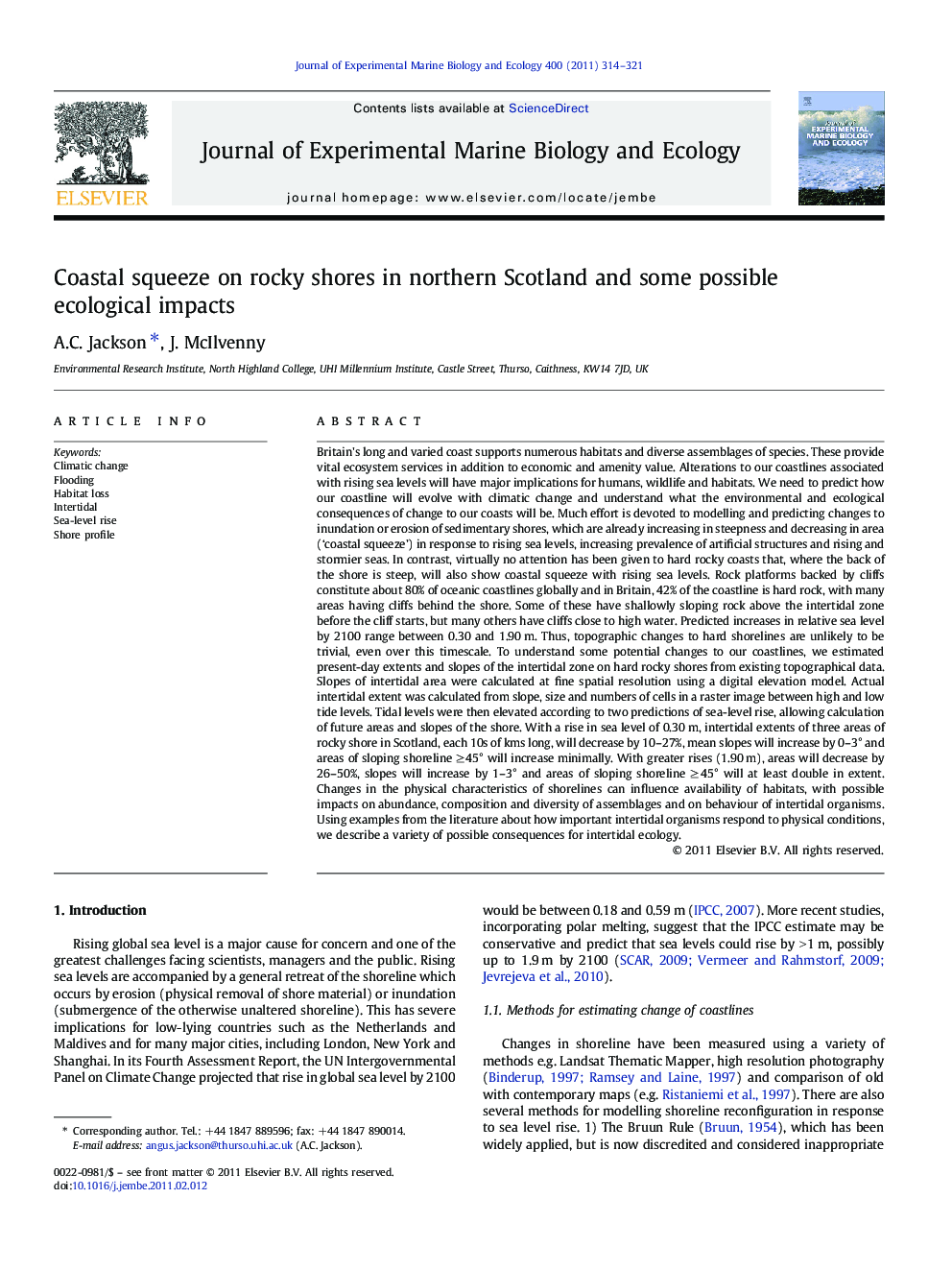| کد مقاله | کد نشریه | سال انتشار | مقاله انگلیسی | نسخه تمام متن |
|---|---|---|---|---|
| 4396361 | 1618463 | 2011 | 8 صفحه PDF | دانلود رایگان |

Britain's long and varied coast supports numerous habitats and diverse assemblages of species. These provide vital ecosystem services in addition to economic and amenity value. Alterations to our coastlines associated with rising sea levels will have major implications for humans, wildlife and habitats. We need to predict how our coastline will evolve with climatic change and understand what the environmental and ecological consequences of change to our coasts will be. Much effort is devoted to modelling and predicting changes to inundation or erosion of sedimentary shores, which are already increasing in steepness and decreasing in area (‘coastal squeeze’) in response to rising sea levels, increasing prevalence of artificial structures and rising and stormier seas. In contrast, virtually no attention has been given to hard rocky coasts that, where the back of the shore is steep, will also show coastal squeeze with rising sea levels. Rock platforms backed by cliffs constitute about 80% of oceanic coastlines globally and in Britain, 42% of the coastline is hard rock, with many areas having cliffs behind the shore. Some of these have shallowly sloping rock above the intertidal zone before the cliff starts, but many others have cliffs close to high water. Predicted increases in relative sea level by 2100 range between 0.30 and 1.90 m. Thus, topographic changes to hard shorelines are unlikely to be trivial, even over this timescale. To understand some potential changes to our coastlines, we estimated present-day extents and slopes of the intertidal zone on hard rocky shores from existing topographical data. Slopes of intertidal area were calculated at fine spatial resolution using a digital elevation model. Actual intertidal extent was calculated from slope, size and numbers of cells in a raster image between high and low tide levels. Tidal levels were then elevated according to two predictions of sea-level rise, allowing calculation of future areas and slopes of the shore. With a rise in sea level of 0.30 m, intertidal extents of three areas of rocky shore in Scotland, each 10s of kms long, will decrease by 10–27%, mean slopes will increase by 0–3° and areas of sloping shoreline ≥ 45° will increase minimally. With greater rises (1.90 m), areas will decrease by 26–50%, slopes will increase by 1–3° and areas of sloping shoreline ≥ 45° will at least double in extent. Changes in the physical characteristics of shorelines can influence availability of habitats, with possible impacts on abundance, composition and diversity of assemblages and on behaviour of intertidal organisms. Using examples from the literature about how important intertidal organisms respond to physical conditions, we describe a variety of possible consequences for intertidal ecology.
Research Highlights
► Relative sea-levels are believed to be rising.
► We use GIS datasets to predict changes to rocky shores caused by rising sea-levels.
► Hard rocky shores will decrease in area and become steeper.
► Examples from the literature illustrate some consequences for intertidal ecology.
Journal: Journal of Experimental Marine Biology and Ecology - Volume 400, Issues 1–2, 30 April 2011, Pages 314–321